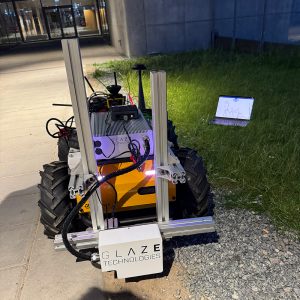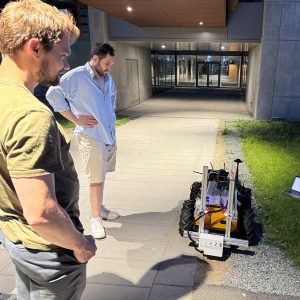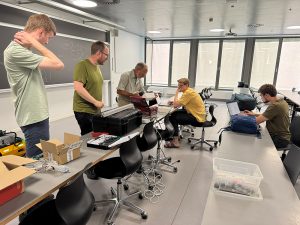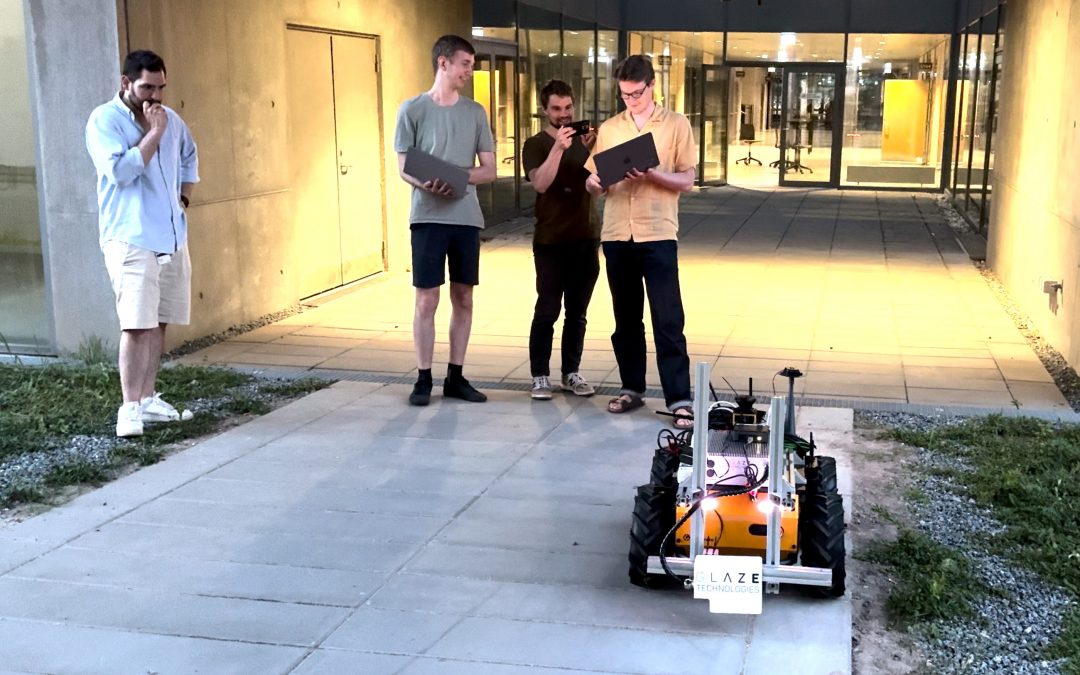GLAZE Technologies, a spin-out from the Technical University of Denmark (DTU), is developing the world’s smallest and most energy-efficient terahertz (THz) sensor systems. These sensors are designed to identify the unique THz “fingerprints” of materials, an approach with significant potential in security and defense applications.
The Terra Salva project (realized through DTU Electro, the Danish National Defence Technological Center (NFC), and GLAZE), focused on one of the most critical challenges in humanitarian demining: detecting landmines and buried/hidden explosives that evade traditional metal detectors. Their solution leverages the specificity of THz sensing to detect explosives through soil and building materials, reducing the risk to human deminers.
The Challenge: Safe, Remote Detection of Hidden Threats
Modern landmines are often designed with minimal or no metal content, making them invisible to conventional detection systems. The team at GLAZE needed a way to validate their sensor technology in field-like conditions without putting people at risk.
Their approach uses terahertz (THz) spectroscopy, a technique that probes the electromagnetic spectrum between microwave and infrared frequencies. In this range, many chemical compounds, including common explosives, absorb and reflect THz waves in distinctive ways. These unique spectral “fingerprints” allow the system to identify the presence of explosive materials, even underneath a layer of soil, or within wall or floor material.
The system had to be:
- Mobile and rugged, to operate on uneven terrain.
- Capable of real-time scanning, to capture THz signatures quickly.
- Compatible with ROS, to streamline sensor integration and control.

Why the Husky A300?
To meet these needs, GLAZE selected the Husky A300 platform. The robot’s proven performance in research and rugged outdoor use made it a natural fit for field testing. Key features that influenced their decision included:
- Robust build to handle varied terrain and environments.
- High payload capacity for carrying the custom THz sensor suite and supporting electronics, while also powering all systems by the on-board battery.
- Native ROS support, enabling rapid prototyping and easy integration with the team’s existing software stack.

Field Integration and Testing
During a robotics hackathon with the University of Southern Denmark (SDU), the GLAZE team mounted their custom THz sensor suite onto the Husky A300 and conducted field tests to evaluate scanning resolution across different soil and building material, detection speed and sensor response time, as well as power consumption and system stability under realistic conditions.
Thanks to the Husky’s ROS compatibility, integration was straightforward. The team was able to focus on refining their detection algorithms and tuning the sensor system, rather than troubleshooting platform issues.

Results: A Critical Step Toward Drone Deployment
Husky served as a critical bridge between lab research and field deployment — allowing the team to gather actionable data without yet relying on the complexities of drone-based flight.
“Working with Clearpath’s Husky A300 has been instrumental in accelerating our development,” said the GLAZE team. “Its rugged design, ROS compatibility, and flexibility made it easy to integrate our custom terahertz sensors and run meaningful field tests. Clearpath’s support helped ensure smooth setup and operation, allowing us to focus on advancing our core technology.”
Looking Ahead: From Ground to Air
GLAZE continues to lead the THz sensor development, working closely with robotics and drone experts from DTU and SDU. The long-term vision for Terra Salva includes a drone-mounted detection system for scalable deployment in mine-affected regions. The Husky A300 will remain a key tool for ground-based validation of new sensor iterations and field testing in civil applications such as infrastructure and environmental monitoring.
Final Thoughts
For robotics researchers exploring the intersection of sensing, autonomy, and humanitarian technology, GLAZE’s work demonstrates how open source ground robots like the Husky A300 can accelerate development cycles and bring autonomous solutions closer to deployment.
Learn more about Husky A300 and contact our team to accelerate your robotics research.

